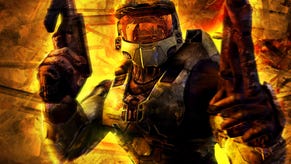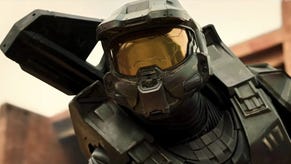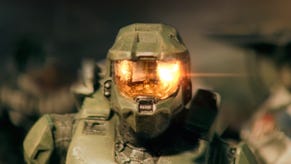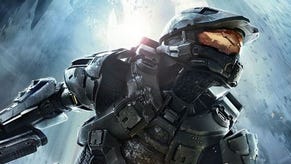Better Than Halo: The Making of Halo 2
As Microsoft prepares to switch off Xbox 1, Bungie reveals the painful birth of the game that defined Xbox Live.
Butcher maintains, however, that the over-reach which turned Halo 2's development into a nightmare was the product of Bungie's own optimism and ambition, not of hubris brought on by the success of Halo.
"I don't think people were sitting around with money-hats on going, 'whee, we can do anything we want!' - it was really just a case of saying, OK, we've done Halo, now I think we should make another of these games because there are a lot of awesome places we still want to go with this universe," he says. "So, how much awesome can we pack into this game? We thought the answer was a lot of awesome, and it turned out to be roughly a quarter the amount of awesome we'd thought..."
Even as the team fought to bring the project under control, though, there were still shining moments that stood out for them - and hinted at the success that Halo 2 would eventually become. Butcher recalls finally getting the network code up and running for an internal Alpha test of the multiplayer in January 2004: "At that point, I knew that we were going to make it, and that it was going to be an awesome multiplayer experience."
For Griesemer, the Eureka moment was getting the vehicle boarding mechanic working. "The first time that we got that working, it was clear that vehicle combat had gotten a whole lot more interesting. We had it mocked up for the E3 demo... It felt so good. I was one of the guys giving the demo, and there were several moments where you could hear the whole audience gasp or cheer. You could tell that certain mechanics were going to go over really well... Boarding, dual-wielding, the boost on the Ghost, the way the Brute roared and charged at you..."

As the end of 2004 approached, Bungie's frantic work pace increased. They knew that this would be the last big Christmas for the Xbox, with the 360 due to launch before the end of 2005. Halo 2 had to hit its date. The pressure was intense.
"We absolutely could have used another couple of months to polish, but then we would have missed the last Christmas... It really wasn't an option," says Griesemer. Surprisingly, though, the team doesn't envy the ability of developers like Valve to state "when it's done" as their release date. "The problem with 'when it's done' is that it would never have been done," admits Griesemer cheerfully. "We could create and scrap 20 versions of the game and never ship any of them."
"Moving to that kind of schedule would only have caused us to lose our focus on getting the game completed," concurs Butcher.
The need to cut features and content didn't go away as the game's final year in development progressed. "Reconciling [our ambition] with reality was a brutal process," says Butcher, "because it happened so late. We were still cutting features only four to five months before the game went gold.
"There's a famous drawing that someone did on a whiteboard in the team's space that shows a plane on fire trying to land on a runway, and people are jettisoning cargo crates out the back of the plane in order to try and get it on the runway. Every crate has the name of a feature we had to cut... In the end, we ran out of room on the whiteboard for all the crates."
















